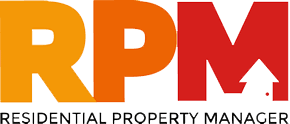Tenants and landlords can be trying at times, but there are ways of avoiding and dealing with situations that put you in the firing line of a disgruntled client
With a wide range of options to choose from, property managers have to select which medium is best to communicate with landlords and tenants. And while most real estate professionals will remain adamant that face-to-face communication trumps all, they may be wrong, according to trainer and CEO of Real Estate Results Network, Michael Sheargold.
“If I don’t have something significant to discuss with a client, and I request a face-to-face meeting, that’s going to frustrate them,” he says.
“Face-to-face is a very effective form of communication, but it will take the most amount of time and is the biggest cost to your business.”
Mr Sheargold is one of Australia’s most well-known real estate trainers, and claims that property managers are too quick to let a landlord drift into obscurity.
“One of my favourite sayings is ‘frequency builds trust’, and normally in the real estate process, the frequency
is lower than what it ideally needs to be,” he says.
“There are high frequency communication times, like when someone is selling a property or if a landlord is considering joining your rent roll.
“The challenge is that outside of those times, the frequency drops off to a level that doesn’t resonate with the
client. Sometimes I refer to it as the real estate orphanage – the clients are dropped off and eventually we’ll be back to pick them up again – which is not a good look.”
Bob Walters, managing director of True Property and executive director of the Leading Property Managers of
Australia (LPMA), agrees that face-toface is sometimes unachievable.
“Face-to-face is still the most important form of communication, but sometimes that’s not possible for a property manager who is in charge of a massive portfolio,” he says. “Plus, the geographical boundaries for property managers are getting bigger, thanks to technology.”
THE TELEPHONE
Timing is very important when it comes to contacting a landlord or tenant.
According to Mr Sheargold, property managers need to assess the situation before jumping for the phone.
“What is the most effective form of communication that this client needs right now? While we say face-to-face is best, a quick phone call to let the owner know that you’ve done the routine inspection on the property and that it looked fantastic is more than sufficient,” he suggests.
For non-emergency maintenance that doesn’t need landlord approval, Mr Sheargold still recommends a courtesy call.
“In a situation where you need a speedy response, the phone is the way to go. It’s fundamentally an interruption, but sometimes it’s necessary to make that interruption to get things moving on an emergency repair,” he explains.
Mr Walters says the obvious advantages of a phone call should dictate the times when it is appropriate.
“In a telephone call, you have the benefit of volume and emotion, while email is very much a clinical, nonpersonal form of communication,” he says.
But from a landlord’s perspective, playing phone tag can become
frustrating for both parties.
“When I get my landlord statement, often the only time I look at it is late on a Sunday night when I’m not working.
But at that time, I can’t reach my agent,” says Charles Tarbey, regional owner and chairman of CENTURY 21 Australasia and an avid property investor.
“If there’s something that’s not right on the statement, or the rent isn’t paid up to date, I can’t reach the agent. I leave a voicemail and I hope to get a call back, then for the next few days I’m waiting
for it. When it doesn’t come, it starts all over again.”
This is why it’s imperative times are designated from the outset, according to Mr Sheargold.
“This comes down to an expectations discussion with every single landlord,” he explains.
“For example, ‘The only time we’ll call you in the middle of the day is if we need an urgent response.
Otherwise, all other communication will take place between nine and ten in the morning, does that suit you?’”
Mr Sheargold claims property managers should be so well connected with their clients that landlords should
never have to make a call.
“If they’re calling you, it means there is a question that they haven’t had answered,” he says. “The landlord should never have a ‘knowledge hole’ if they have a good, proactive property manager.”
According to Bob Walters, email is the most commonly used form of communication across the property management industry.
“Certainly the communication method of choice for most property managers is email, because it’s quick and
simple, and you can keep a proper trail of communication,” he says.
This trail of communication is very important for protecting the office if any dispute arises, according to digital
communication strategist Peter Fletcher.
“A lot of the property management process requires some form of written communication, especially when you’re letting a landlord know that a tenant has done something wrong, or the property requires some maintenance,” he says.
“It’s an important part of your risk management strategy.”







You are not authorised to post comments.
Comments will undergo moderation before they get published.